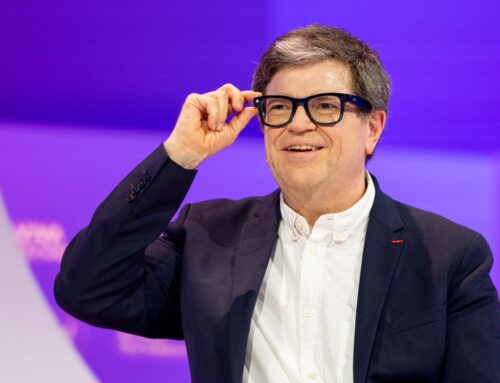Can Australia power its big aluminum smelters with clean energy?
November 12, 2025

Australia’s power sector is steadily shifting away from coal and toward running on 100% renewable energy. Now the country is trying to ensure some of its biggest electricity users — aluminum smelters — aren’t left behind in the clean-energy transition.
The Australian government is developing a Green Aluminium Production Credit, or GAPC, to reduce the cost of using solar, wind, and energy storage to power the country’s four giant smelters. The AU$2 billion (US$1.3 billion) program is part of a larger federal industrial policy that aims to decarbonize Australia’s economy over the next decade.
“Australia is sending a signal that it wants this industry to stay,” said Marghanita Johnson, CEO of the Australian Aluminium Council. “Therefore, what do we need to do to keep the industry during this challenging transition?”
Smelters everywhere are power-hungry facilities. That’s because the process of converting raw materials into aluminum can require hundreds of megawatts of electricity running at near-constant rates. In Australia, a country of nearly 28 million people, the four smelters consume roughly 10% of the nation’s electricity and contribute about 4% of total greenhouse gas emissions.
As in many places, renewables are the country’s cheapest new electricity sources, and battery storage costs are plunging. But the fact that wind and solar power aren’t available around the clock means that smelters need to procure more total megawatts from multiple sources to make sure that, at any moment, they have enough capacity to operate, Johnson said.
Australia’s Department of Industry, Science and Resources is still finalizing the design of its GAPC. Generally, though, it will cover between 30% to 40% of the extra costs associated with using renewables to produce aluminum instead of conventional sources like coal and gas. The program will provide credits to aluminum producers for every metric ton of “green” aluminum they produce for up to 10 years, starting from the 2028-2029 financial year.
The initiative is part of an emerging movement by countries to subsidize or otherwise support domestic heavy industries as they work to decarbonize, said Chris Bataille, an adjunct research fellow at Columbia University’s Center on Global Energy Policy.
He noted that, under the Biden administration, the United States had been considering developing tax credits to incentivize industrial manufacturers to use more renewable energy, though those discussions have sputtered under the second Trump administration. In China, meanwhile, the central government is investing more money into projects that reduce or replace coal use in sectors like steel, cement, and chemicals.
”This is going to be a big question going forward: How [can countries] get these big industries off of fossil fuels and onto using variable renewable power, and all the adaptations that are necessary?” Bataille said.
Aluminum smelters typically sign long-term contracts with utilities that lock in the price of electricity the companies pay over years or decades. In Australia, those contracts are coming to an end, and as manufacturers look to sign new deals, they’re finding themselves in a dramatically different energy market, Johnson said.
Today, three of Australia’s smelters get most of their electricity from coal-fired power plants: Rio Tinto’s Boyne Island facility in Queensland, Alcoa’s Portland plant in Victoria, and Tomago Aluminium’s smelter in New South Wales. Only Rio Tinto’s Bell Bay smelter in Tasmania runs predominantly on hydropower.
Coal power is steadily declining in Australia as renewables surge, owing primarily to market forces. About 90% of the aging coal fleet will likely be gone by 2035, and the rest could shutter later that decade, the head of the Australian Energy Market Operator, which oversees the nation’s power markets, recently told Canary Media’s Julian Spector. (Australia banned nuclear energy decades ago, so it’s not an option.)
For now, coal still accounts for 46% of Australia’s annual electricity production, according to the International Energy Agency. Renewables contribute about 35%, though existing projects aren’t necessarily located near smelters that need them.
Rio Tinto, which owns a majority share of Tomago Aluminium, warned in late October that the smelter is bracing for a potential shutdown by the end of 2028 owing to the soaring costs of both “coal-fired and renewable energy options from January 2029” that would make the facility’s operations commercially unviable. Tomago is the country’s largest smelter, accounting for about 40% of Australia’s annual aluminum production.
“There is significant uncertainty about when renewable projects will be available at the scale we need,” Jérôme Dozol, CEO of Tomago Aluminium, said in an Oct. 28 statement.
Johnson said Tomago’s troubles point to the broader limitations of initiatives like the GAPC. While the production credit can reduce power costs for smelters, other measures are needed to support the buildout of not just wind, solar, and battery storage but also transmission lines and grid infrastructure that connect the resources to the energy-gobbling smelters.
The Australian Aluminium Council is also advocating for energy policies that reward smelters for the benefits they are able to provide to the grid. For example, smelters can rapidly reduce their power consumption for about an hour at a time to help stabilize the system during emergencies. Alcoa is participating in such a demand-response program in Australia, as is Rio Tinto’s Tiwai Point smelter in New Zealand. Aluminum plants can also be an important source of demand for solar power plants in particular, since factories use plenty of power during the day when households generally consume less.
“We’re doing a lot of work here in Australia, in terms of the energy transition and how all these pieces of the puzzle need to fit together,” Johnson said.
{
if ($event.target.classList.contains(‘hs-richtext’)) {
if ($event.target.textContent === ‘+ more options’) {
$event.target.remove();
open = true;
}
}
}”
>
Maria Gallucci
is a senior reporter at Canary Media. She covers emerging clean energy technologies and efforts to electrify transportation and decarbonize heavy industry.
Search
RECENT PRESS RELEASES
Related Post




